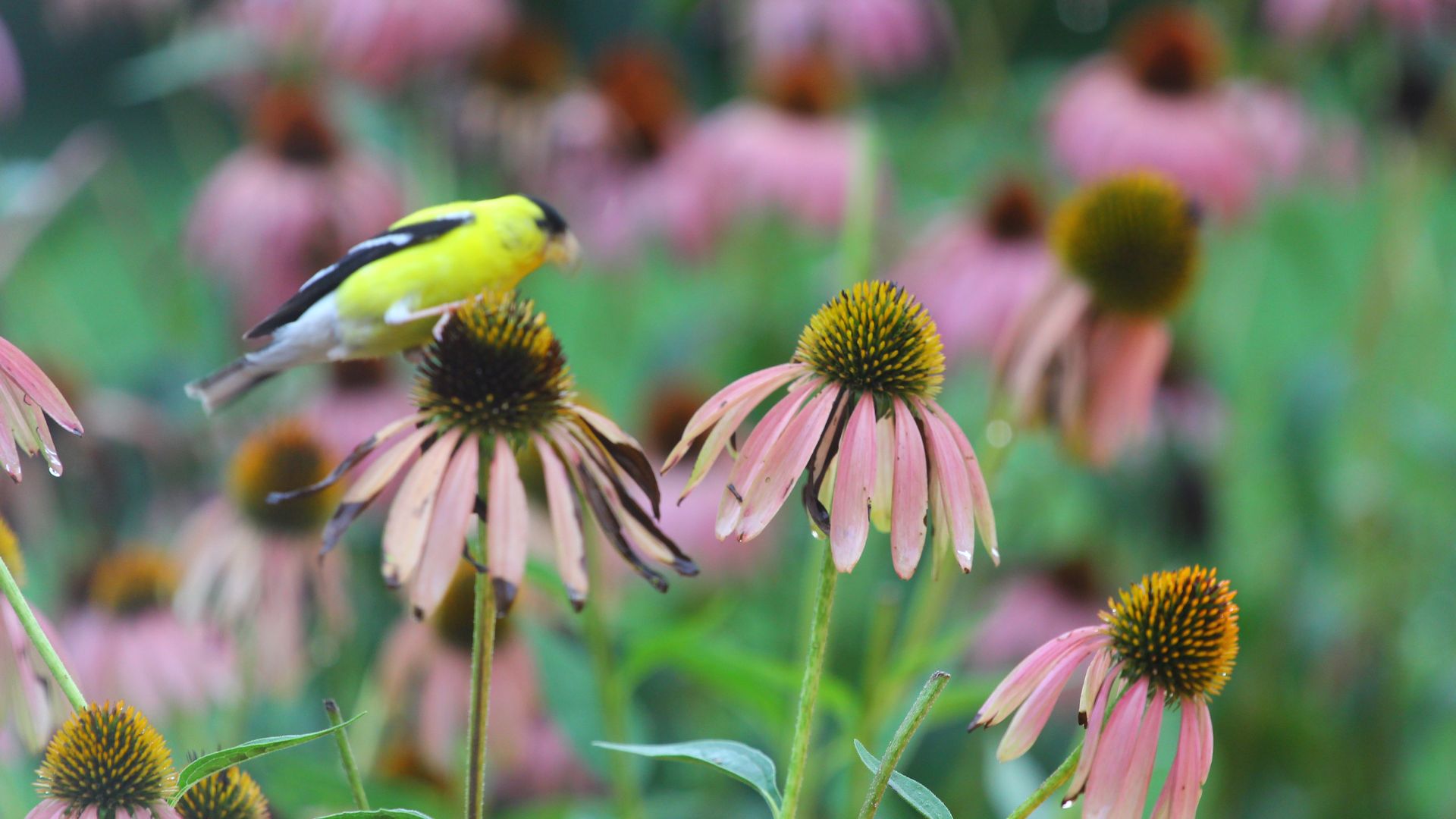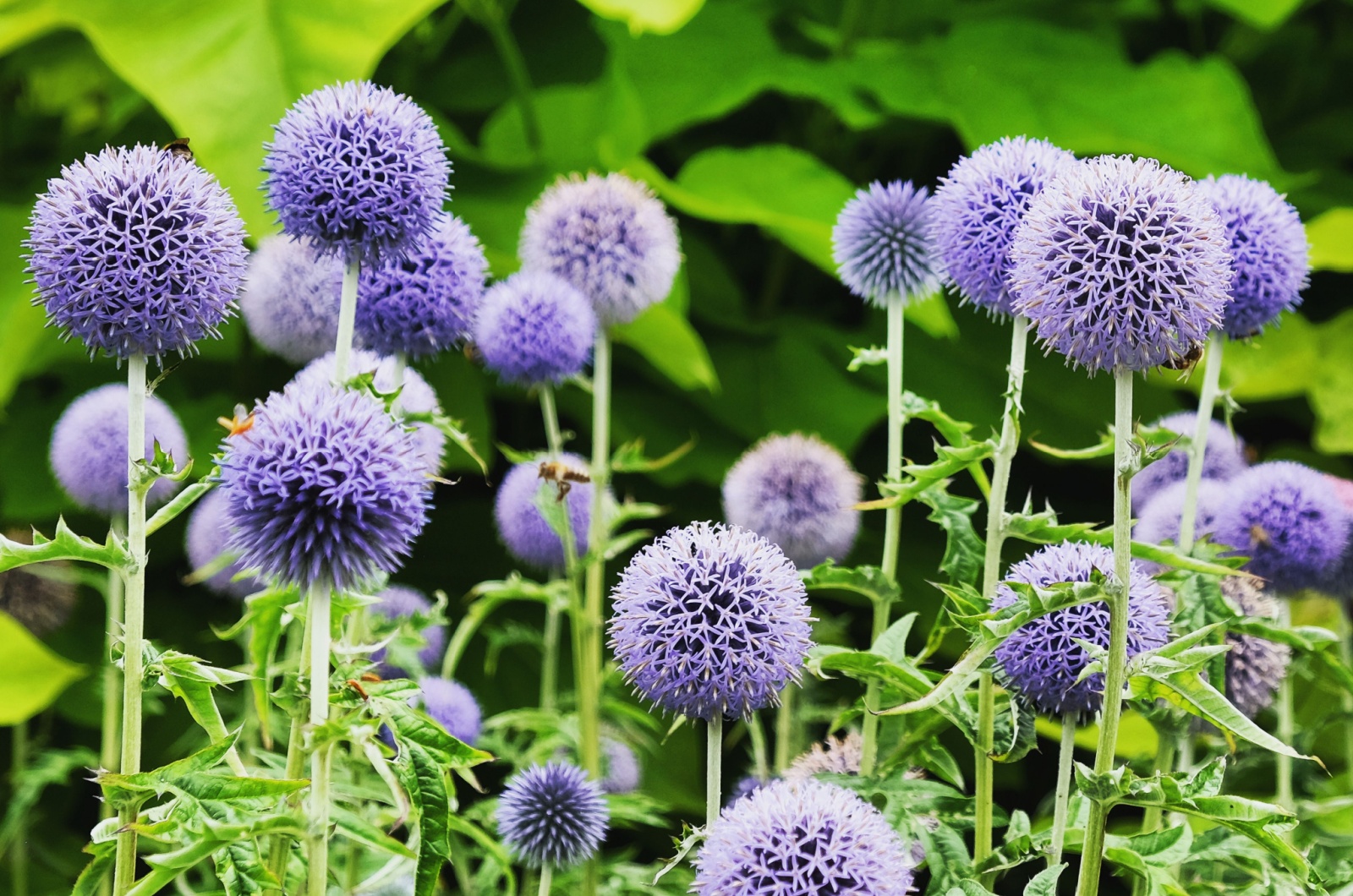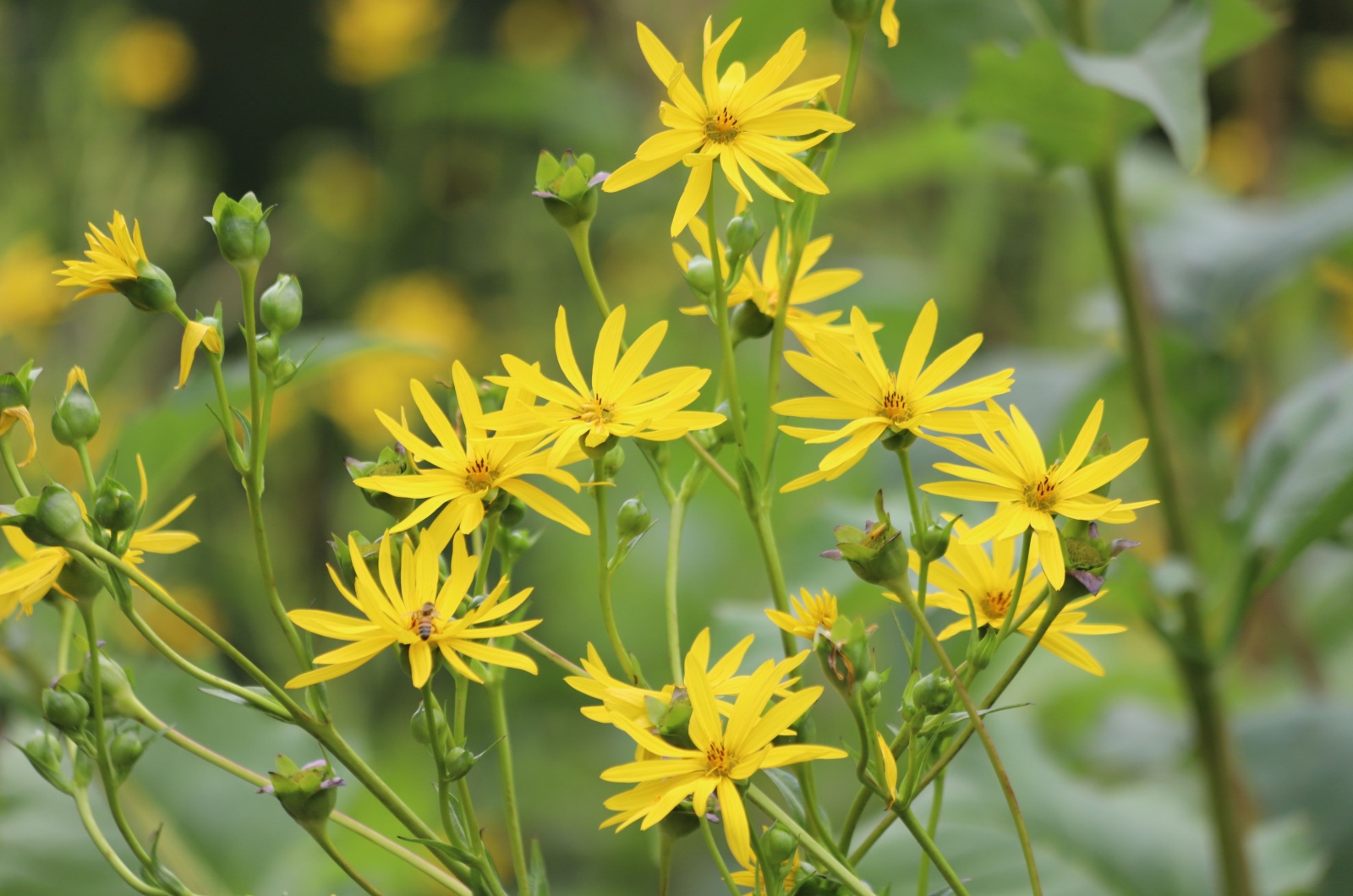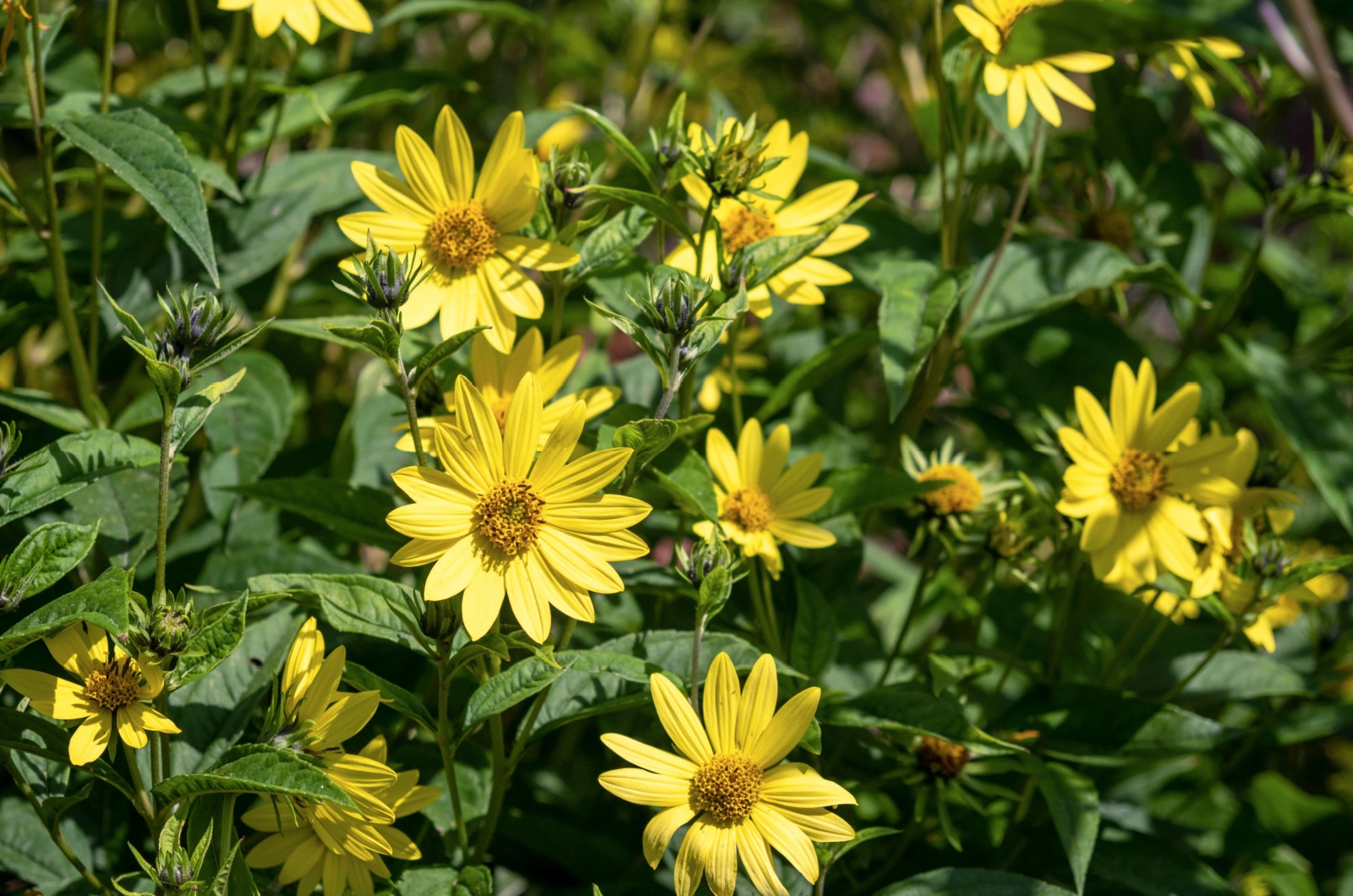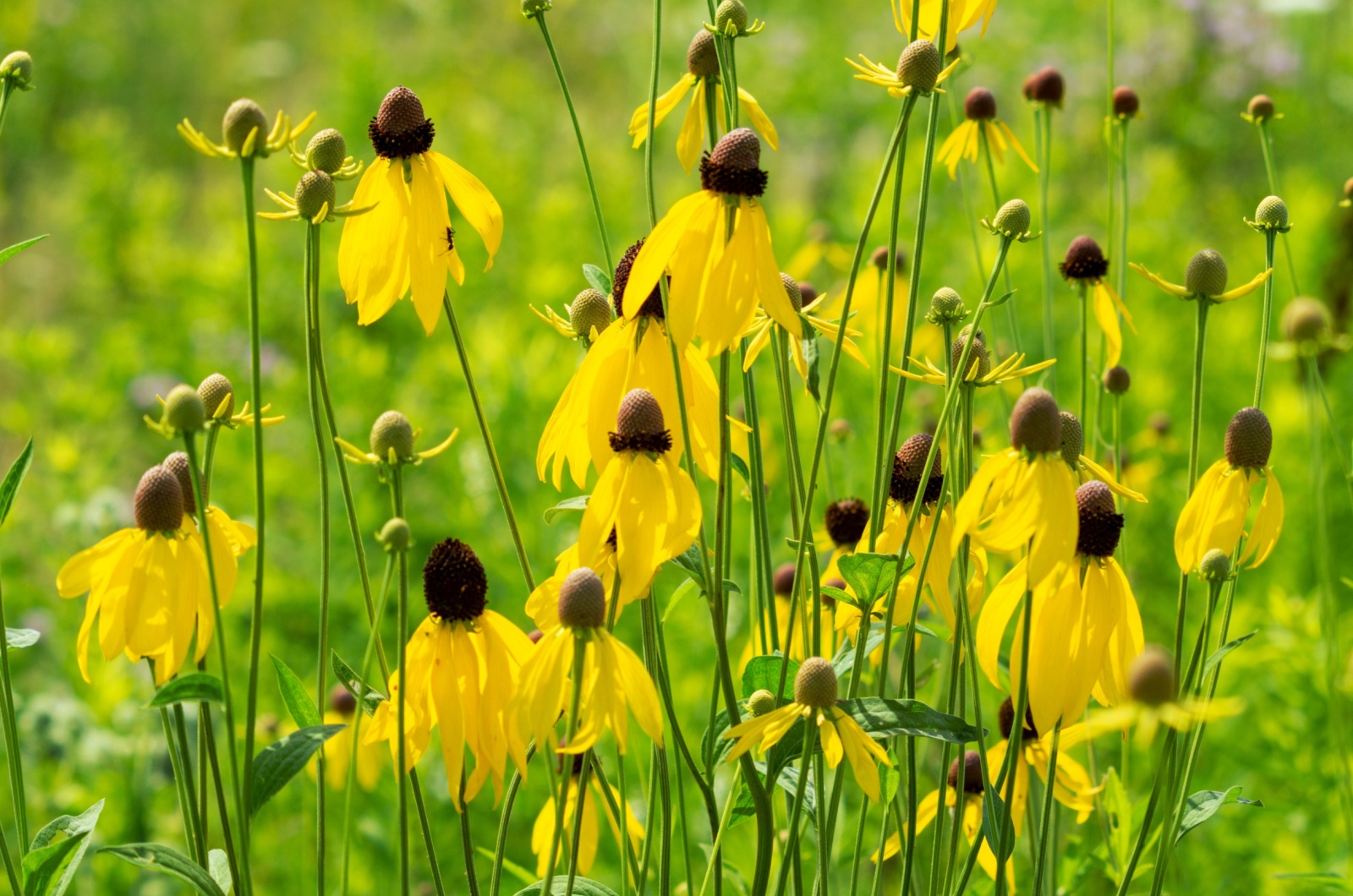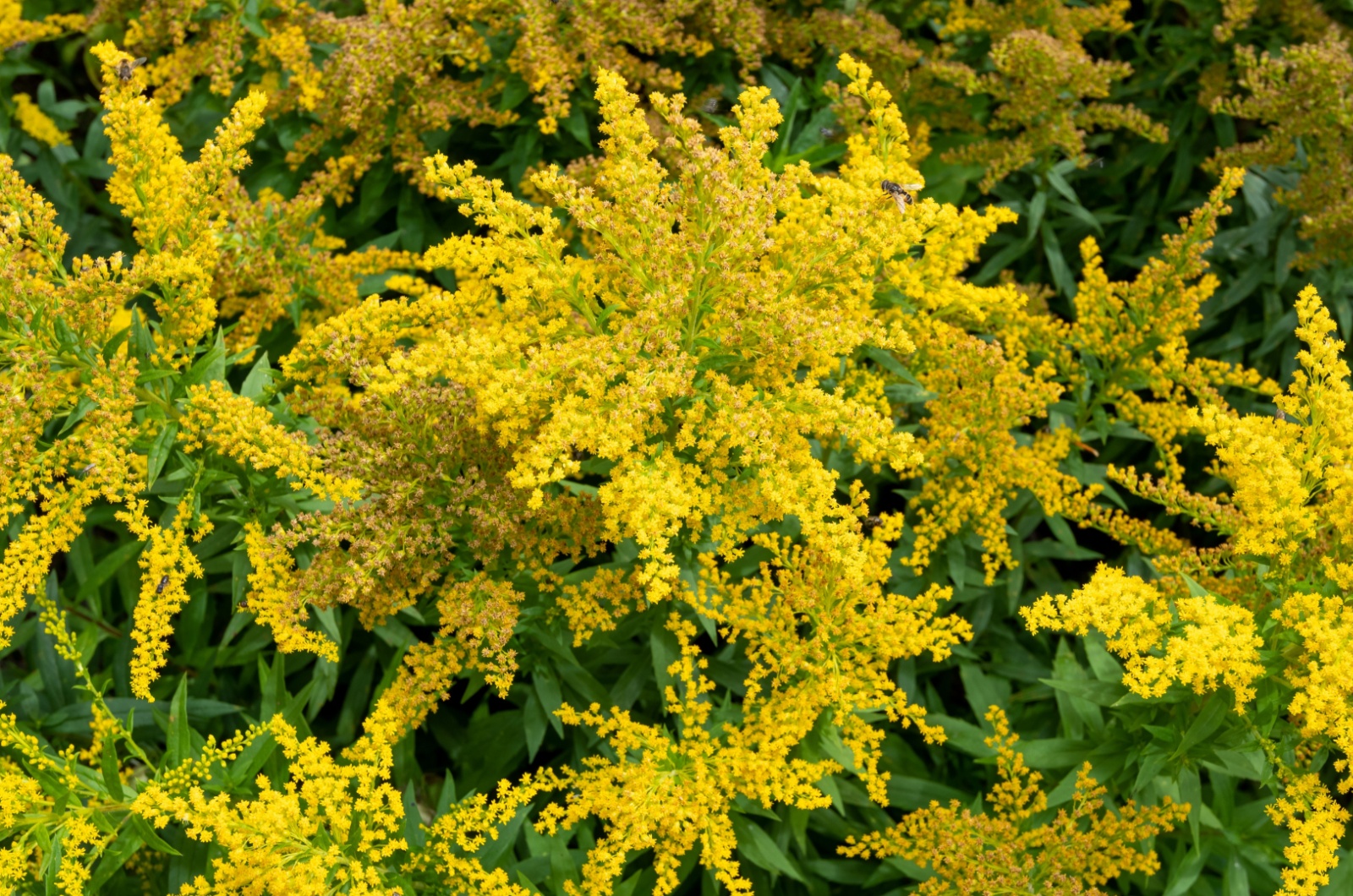As winter approaches, gardens can start to look empty… and it’s not just about looks – wildlife loses important food sources too. It’s sad to think that those little birdies are cold and hungry!
Luckily, we can help our feathered friends by planting perennials that feed them through the cold months.
Winter is tough for birds when food is hard to find. With wild bird populations dropping by nearly 30% since 1970, we gardeners can make a difference.
Adding native perennials to your garden provides seeds, berries, and shelter. So, why wait?
Prep your soil and start planting these perennials:
1. Globe Thistles Produce Flower Seeds That Birds Snack On
In a garden filled with yellows, pinks, and purples, the blue globe thistle really stands out with its spiky, round flowers and fuzzy green leaves.
Native to the dry regions of southern Europe, blue globe thistle loves dry conditions and has a deep taproot. Plant it in full sun and well-drained soil, and it will thrive (as long as you don’t let it sit in the water too long).
My sister has a patch of blue globe thistle in her garden that adds height behind the shorter yarrows and coneflowers (I absolutely love it!). It’s also great for attracting pollinators like bees and butterflies.
The best part is it requires very little care. While the leaves may look a bit messy by late summer, you can easily trim the scrawny ones.
Just remember not to deadhead all the flowers – those seeds are a favorite snack for songbirds!
Also read: 4 Proven Methods To Attract Birds That Will Keep Slugs From Ruining Your Plants
2. Cup Plants Give Them Water, Seeds, And Shelter
Cup plants are gorgeous, tall perennials that produce daisy-like yellow flowers and coarsely-toothed leaves with thick stems. These grow in clumps and create small cups, hence the name!
Pollinators can’t resist its sweet nectar, while birds love its plentiful seeds and the small puddles of water that gather at the nodes.
To grow cup plants, give them full sun and keep the soil moist. Their size makes them ideal for the back of borders, prairie gardens, or as a standout in mixed perennial beds.
While this plant is native to much of North America, it can be invasive in some northeastern states, so be sure to check with your local environmental or agricultural department before planting.
Also read: These Easy-To-Make Suet Cakes Will Keep The Birds Coming Back To Your Yard
3. Birds Find Narrowleaf Sunflower Seeds Extra Yummy
The narrowleaf sunflower (aka swamp sunflower), is another tall perennial that stands proud with its rigid, needle-like leaves and cheery yellow flowers.
Native to much of central and eastern North America, all this beauty needs is full sun and slightly acidic soil.
With a height that can reach up to six feet, it’s perfect for the back of a mixed perennial bed or as a statement plant in a rain garden.
Flowering from late summer to early fall, the narrowleaf sunflower is one of the last to bloom, providing a crucial nectar source for pollinators just when they need it most.
Food becomes scarce as the season changes, so its seeds become meals for many birds.
4. Prairie Coneflowers Are Also Packed With Seeds
Prairie coneflowers are packed with seeds and are loved by bees, butterflies, and birds alike.
In mid-summer, it features beautiful, multi-colored flowers that circle a tall center cone. Come fall, this cone is packed with seeds, which makes it a popular snack for pine siskins, white-crowned sparrows, and goldfinches.
Prairie coneflowers have deep taproots that make them perfect for xeriscapes and dry gardens. Plant them somewhere sunny and consider pairing them with other drought-tolerant plants.
Also read: 10 Best Trees For Wildlife And Biodiversity
5. Birds Are Attracted To Goldenrods
Goldenrod comes in over 100 species across North America, so you’re sure to find one that suits your garden.
Most varieties love full sun, though a few can handle some shade. They’re super low-maintenance and great for pollinator gardens, meadows, or prairies.
But beware, they spread fast by rhizomes and self-seeding.
Goldenrods might not stand out most of the year, but in late summer, they burst into bright yellow blooms that attract loads of bees and butterflies.
Birds like woodpeckers and chickadees love munching on goldenrod galls (those round bumps that house insect larvae), and they get the seeds from the flowers!
Keep your garden thriving through winter with these perennials! They’re not only beautiful and low-maintenance, but they also provide a haven for wildlife.
Also read: Fruit And Berry Trees That Will Make Your Garden A Bird Paradise

